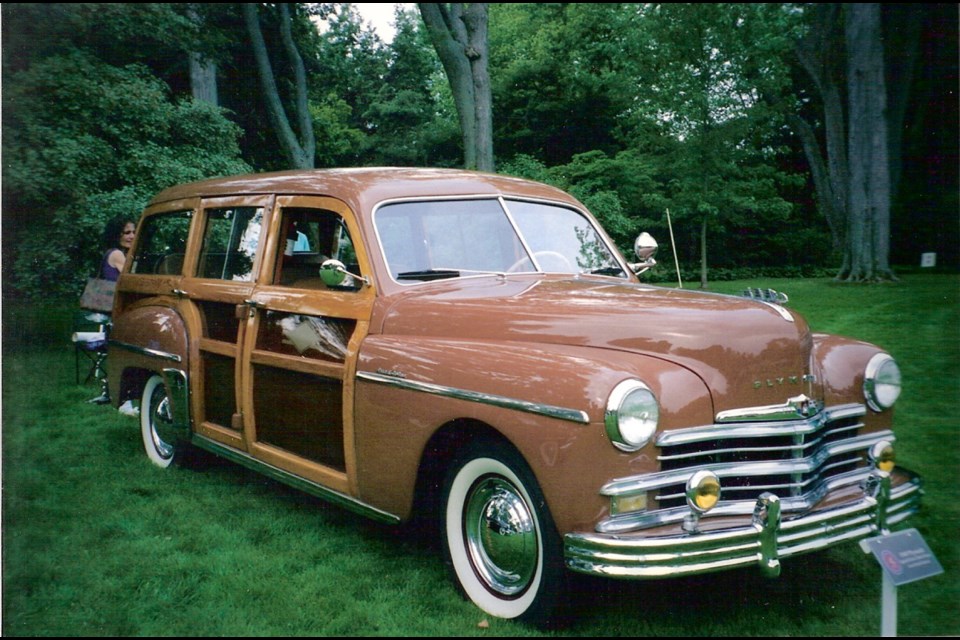Several years ago, the station wagon was gradually superseded by the minivan, sport utility vehicle and the awkwardly named crossover. Now, wagons are making a comeback, although often no longer called station wagons because that utilitarian name is apparently too prosaic and suburbany for sophisticated modern motorists.
But station wagons, whatever called, are eminently practical vehicles, especially now that they are made of more practical steel rather than their former wood. The name came from the original fancy horse-drawn wooden passenger wagons used to transport passengers and luggage from railway stations to their hotels.
Motorized station wagons gradually took over, but they retained their wood-clad construction. In spite of the advent of all-steel car bodies led by such cars as the 1915 Dodge Brothers car, the wagon’s persona continued to be related to wood even though it was heavier, expensive to build and required more maintenance.
The change to steel wagons began after the Second World War. Willys-Overland introduced the Jeep all-steel station wagon in 1946, but being based on a utility vehicle, it was not as refined or comfortable as a regular car. And Cincinnati-based Crosley Motors began producing Crosley wagons in 1947, but they were too small to be practical.
It was the Chrysler Corp. that popularized a practical, all-steel station wagon by combining the versatility features of a wagon, such as a fold-down rear seat, with the comfort and driving characteristics of a car.
The breakthrough two-door 1949 Plymouth Suburban was built on Plymouth’s short 2,819-millimetre wheelbase chassis. This versatile vehicle drove like a car and had the utility and carrying capacity of a wagon. And in spite of initially coming only in what Mechanix Illustrated car tester Tom McCahill called “horse’s hoof brown,” it sold well.
McCahill tested one on a 6,440-kilometre trip from New York to Florida and back. He found “a lack of squeaks and rattles,” and said it was “as quiet as a bought-off insurance witness.”
He even tested it in a very unorthodox way by driving it in the Atlantic Ocean at Daytona Beach, where all went well until a wave shorted out the ignition. He was lucky to be able to coax it back to dry land with the starter motor and avoid sinking in the sand.
McCahill reported that the old 3.6-litre (218 cu. in.) side-valve six burned a quart of oil every 500 km when cruising at 125 km/h, but this stopped with a return to normal highway speeds.
The Suburban was no performance tiger. With a leisurely zero-to-100 km/h time of 24.6 seconds and top speed of 137 km/h, it was definitely not in the Olds 88 league.
But as good as the Suburban was, Chrysler hedged its bet by keeping the traditional Plymouth wood-clad wagon. Thus, Plymouth offered a perfect example of the wood-to-steel transition taking place in station wagons.
For additional interior space, the Plymouth Special Deluxe wood-clad wagon was mounted on the longer 2,997-mm wheelbase. Four doors gave added convenience, and unlike the Suburban with its spare tire under the cargo floor, the woody’s spare was mounted on the back of the tailgate behind a round, hinged lid. Folding bumper guards allowed the tailgate to be fully lowered.
Although the mechanicals of the Special Deluxe woody were the same as the Suburban, being Plymouth’s top-of-the-line model, it was more luxuriously appointed. The interior was trimmed with such elegant touches as mahogany-grained instrument panel and richer upholstery. Outside were chrome mouldings around the windshield and rear window. With its third seat, the woody carried up to eight passengers while the Suburban was limited to six.
In spite of being handsome and glamorous compared with the functional-looking Suburban, the 1949 Plymouth woody wagon had sales of just 3,443 compared with more than 19,000 Suburbans, even though the Suburban was only a half-year model. Part of the reason was that the woody was priced about $500 higher, a significant sum in those days. There was also the additional maintenance required by the wooden body. And its 107-kg extra weight made it even slower.
The Plymouth Special Deluxe woody wagon was carried over into 1950, but when just over 2,000 found buyers, versus the Suburban’s 34,000-plus, Chrysler Corp. discontinued it.
The transition from the wood-bodied station wagon to the all-steel version as exemplified by the Plymouth Suburban happened quickly. It would be completed in the next couple of years as other manufacturers also phased out their wood-clad wagons. But to maintain the woody connection and cachet, they added simulated wood vinyl cladding.



